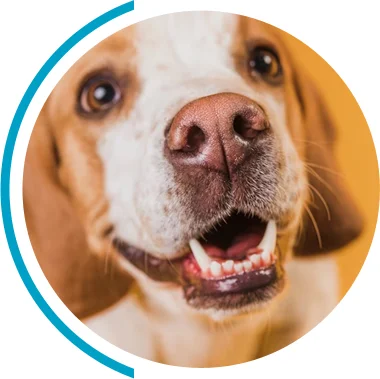Fear in dogs is a common but often misunderstood issue that requires a compassionate and effective approach. Dog owners in Yorba Linda are increasingly recognizing the need for specialized training techniques to help their scared pets. This article aims to provide valuable insights into understanding fear in dogs, the role of professional training, and effective techniques to support fearful dogs.
Fear is a natural emotion that can manifest in dogs for various reasons. Understanding the underlying causes of fear is crucial in helping your dog overcome its anxieties. Often, fear responses can stem from past trauma, lack of socialization, or sensitivity to certain stimuli. For example, a dog that has had a negative experience with a specific object, such as a vacuum cleaner, may develop a lasting fear of that object. This highlights the importance of a positive and nurturing environment during a dog’s formative years, as early experiences can significantly shape their emotional responses later in life.
Different dogs may react fearfully to different triggers. Some common triggers include loud noises, unfamiliar environments, interactions with strange people or animals, and sudden movements. For instance, dogs may become anxious during thunderstorms or fireworks, while others might panic when faced with unfamiliar dogs on walks. Additionally, changes in routine, such as moving to a new home or the arrival of a new family member, can also trigger anxiety. Understanding these triggers can help dog owners create a more secure and predictable environment for their pets.
Identifying these triggers in your dog’s environment is the first step in addressing fear-based behaviors. Keeping a detailed journal can help pinpoint these stressors and aid in the training process. By noting the specific circumstances that lead to fearful reactions, owners can develop strategies to gradually desensitize their dogs to these triggers, helping them build confidence over time.
It’s essential to recognize the signs that indicate your dog is scared. Common manifestations of fear include trembling, hiding, excessive barking, whimpering, or even aggression. Additionally, dogs may display submissive behaviors such as cowering, avoiding eye contact, or urinating in response to fear. These signs can vary widely between individual dogs, making it crucial for owners to be observant and attuned to their pet’s unique behaviors and body language.
Being attentive to these behaviors will equip you with the knowledge needed to support your dog effectively. Early intervention can prevent these fear responses from escalating into more severe anxiety or behavioral issues. Implementing a consistent routine, providing a safe space, and using positive reinforcement techniques can greatly assist in alleviating your dog’s fears. Furthermore, consulting with a professional dog trainer or a veterinary behaviorist can provide tailored strategies to help your dog cope with its fears and thrive in its environment.
While some owners may be able to address their dog’s fears on their own, professional dog training can offer a structured approach that often yields quicker results. Professional trainers have the expertise and resources that can significantly benefit both the dog and the owner.
Professional trainers utilize various methods to address fear in dogs. They create tailored training programs that focus on gradual exposure to fear triggers while providing support and guidance to the owner. Techniques such as desensitization and positive reinforcement are often employed to help dogs build confidence in a safe environment.
Moreover, trainers can offer insights into the dog’s behavior and suggest strategies that owners may not have considered. Their experience with different breeds and temperaments allows for a more nuanced approach to each individual dog’s needs.
Training a fearful dog requires immense patience and consistency. Quick fixes are rarely effective, and it’s crucial to approach training sessions with a calm and understanding demeanor. Each dog progresses at its own pace, and recognizing small milestones can help both the owner and the dog remain motivated throughout the training process.
Consistency in commands, praise, and routines is key to building a secure foundation. It helps the dog understand expectations and reduces uncertainty, which can exacerbate fear.
Effective training techniques are vital in managing and alleviating fear in dogs. The most beneficial approaches are those that focus on building trust and reinforcing positive behaviors.
Positive reinforcement training involves rewarding desirable behaviors with treats, praise, or playtime. This method encourages dogs to associate good experiences with previously fearful situations. For example, if a dog is anxious during walks, providing treats for calm behavior can gradually change its perception of the activity.
This method not only increases confidence but also strengthens the bond between the owner and the dog. Fearful dogs need reassurance, and positive reinforcement helps build that assurance in a loving way.
Desensitization is a technique used to gradually expose a dog to its fear triggers in a controlled environment. This process allows the dog to become accustomed to the stressor at a distance or at a lower intensity. Meanwhile, counter-conditioning involves changing the dog’s emotional response to the trigger.
For instance, if a dog fears strangers, introducing the dog to calm and friendly people while providing treats can help alter the emotional response over time. Combined, these techniques can significantly reduce fear responses and improve the dog’s overall behavior.
Once progress is established, it’s important to continue reinforcing the training at home. This consistency will help ingrained positive behaviors and provide your dog with a sense of stability.
Establishing a safe space in your home can make a significant difference for a fearful dog. This area should be quiet, comfortable, and free from stressors. Including cozy blankets, favorite toys, and calming elements can help your dog feel secure.
Providing a space where your dog can retreat when feeling overwhelmed can foster a sense of safety and encourage relaxation, allowing progress to continue even outside training sessions.
Incorporating training into daily routines is an effective way to provide ongoing support for your fearful dog. Simple actions, such as giving commands to reinforce good behavior and using treats during peaceful moments, can bolster the skills learned during training sessions.
Engaging in positive, low-stress activities like gentle playtime or quiet walks can further reinforce your dog’s trust and confidence, integrating their training into their everyday life.
While many can effectively manage their dog’s fears with training, some situations may call for professional assistance. Recognizing when to seek help is vital for the well-being of your dog.
Severe fear and anxiety require immediate attention. Signs such as constant trembling, aggression, or severe avoidance behavior indicate that your dog may need specialized intervention. If your dog’s fear leads to self-harm or becomes a danger to others, it’s essential to consult with a professional trainer or a veterinary behaviorist.
In these cases, timely intervention can prevent escalation and provide the necessary strategies to help your dog recover from its fears more effectively.
In Yorba Linda, professional dog training services abound, with experts well-versed in handling fearful dogs. These professionals bring a wealth of experience, tailored strategies, and community resources to assist you and your dog in overcoming challenges.
By leveraging professional training, dog owners can see substantial improvements in their pet’s behavior, leading to a happier, healthier life. With the right support, fearful dogs can learn to navigate their world with confidence and joy.
If your beloved canine companion is struggling with fear and anxiety, remember that you’re not alone. At The Grounded Hound Canine Coaching, we understand the challenges you and your pet face. With a CTC from the Academy for Dog Trainers, an ABCDT from the Animal Behavior College, and specialized certifications in Separation Anxiety, we’re equipped to offer positive, compassionate, and effective training solutions. Our approach is rooted in Patience, Kindness, and Consistency, aiming to strengthen the bond between you and your dog. Don’t let fear stand in the way of a joyful life for your furry friend. Contact Us Today and take the first step towards a confident, happy, and well-adjusted dog.

